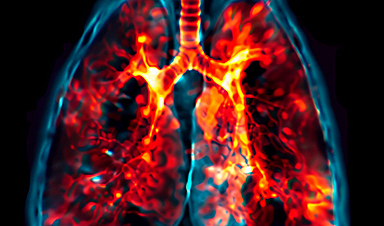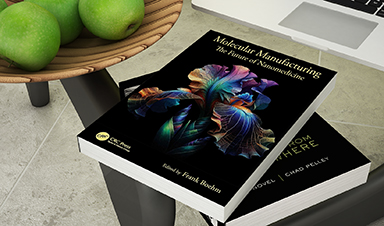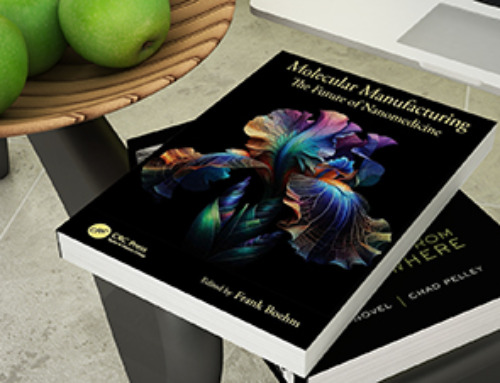Long COVID is more than just lingering symptoms—it may have a hidden biological basis that standard medical tests fail to detect.
A groundbreaking study using advanced MRI technology has uncovered significant lung abnormalities in children and adolescents suffering from long COVID, particularly in blood flow and air movement. These findings help explain persistent symptoms like chronic fatigue and shortness of breath, offering a new path for diagnosing and managing this condition.
MRI Reveals Lung Abnormalities in Children with Long COVID
A new study published today (February 25) in Radiology, the journal of the Radiological Society of North America (RSNA), reveals that an advanced type of MRI has detected significant lung abnormalities in children and adolescents with long COVID.
Long COVID, or post-COVID-19 condition, occurs when symptoms persist for more than 12 weeks after a COVID-19 infection. While children and teens generally experience a milder form of the condition, symptoms like chronic fatigue, headaches, and difficulty concentrating can interfere with school and social activities.
A Need for Better Testing
In adults, chest CT scans are commonly used to assess lung function in long COVID cases. However, this method is not usually recommended for children due to radiation exposure and the potential need for contrast agents.
Instead, young patients suspected of having long COVID are typically evaluated through pulmonary function tests, echocardiography, and medical history reviews. Unfortunately, these standard tests often show normal lung and heart function, even in children experiencing ongoing symptoms.
"Parents should understand that their children's persistent symptoms after COVID-19 may have a measurable physiological basis, even when standard medical tests appear normal," said lead study author Gesa H. Pöhler, M.D., a senior physician in the Department of Diagnostic and Interventional Radiology at Hannover Medical School in Germany.
The researchers employed phase-resolved functional lung (PREFUL) MRI. This advanced MRI technology can analyze lung ventilation (air movement in and out of the lungs) and perfusion (blood flow through the lungs). PREFUL MRI doesn't require the use of radiation or intravenous contrast agents and can be done while the patient breathes freely, making it a suitable procedure for children.
First Evidence of Lung Perfusion Abnormalities
"Our research provides the first comprehensive evidence of measurable regional lung perfusion abnormalities in pediatric post-COVID-19 condition using radiation-free, contrast-free lung imaging," Dr. Pöhler said.
For the prospective study, conducted between April 2022 and 2023, the researchers enrolled 54 patients ranging in age from 11 to 17 years. Half of the patients were diagnosed with long COVID, and the other half were healthy controls. A self-reported assessment called the bell score was used to assess symptom severity in patients with long COVID.

Blood Flow Reduction and Fatigue Connection
Compared to healthy controls, children and adolescents with long COVID had significantly reduced blood flow in the lungs. A reduction in blood flow patterns in organs or other areas of the body can result in a lack of sufficient oxygen and nutrients.
The most prevalent symptom of fatigue affected all but one patient with long COVID.
"Importantly, the severity of fatigue symptoms correlated with these blood flow changes, suggesting a possible biological basis for the patients' ongoing symptoms," Dr. Pöhler said.
In addition to poor blood flow, a subgroup of long COVID patients with cardiopulmonary symptoms, such as shortness of breath, also showed a reduction of air movement and reach in the lungs.

Future Implications for Long COVID Monitoring
The researchers suggest that continuous monitoring of lung abnormalities in children with long COVID at various stages of the condition could help guide therapeutic interventions and monitoring strategies.
"Quantitative lung MRI establishes a potential imaging biomarker profiling and helps to enable disease severity follow-up for this complex condition in the future," Dr. Pöhler said.
Reference: "Phase-resolved Functional Lung MRI Reveals Distinct Lung Perfusion Phenotype in Children and Adolescents with Post–COVID-19 Condition" by Gesa H. Pöhler, Andreas Voskrebenzev, Marc-Luca Heinze, Valentina Skeries, Filip Klimeš, Julian Glandorf, Jan Eckstein, Nigar Babazade, Marius Wernz, Alexander Pfeil, Gesine Hansen, Frank K. Wacker, Jens Vogel-Claussen, Martin Wetzke and Diane Miriam Renz, 25 February 2025, Radiology.
DOI: 10.1148/radiol.241596
Collaborating with Dr. Pöhler were Andreas Voskrebenzev, Ph.D., Marc-Luca Heinze, Valentina Skeries, M.D., Filip Klimeš, Ph.D., Julian Glandorf, M.D., Jan Eckstein, M.D., Nigar Babazade, Marius Wernz, B.S., Alexander Pfeil, M.D., Gesine Hansen, M.D., Frank K. Wacker, M.D., Jens Vogel-Claussen, M.D., Martin Wetzke, M.D., and Diane Miriam Renz, M.D.
News
Two New Books From Frank Boehm, NA Founder – To be Released Dec. 2025
Molecular Manufacturing: The Future of Nanomedicine This book explores the revolutionary potential of atomically precise manufacturing technologies to transform global healthcare, as well as practically every other sector across society. This forward-thinking volume examines [...]
What could the future of nanoscience look like?
Society has a lot to thank for nanoscience. From improved health monitoring to reducing the size of electronics, scientists’ ability to delve deeper and better understand chemistry at the nanoscale has opened up numerous [...]
Scientists Melt Cancer’s Hidden “Power Hubs” and Stop Tumor Growth
Researchers discovered that in a rare kidney cancer, RNA builds droplet-like hubs that act as growth control centers inside tumor cells. By engineering a molecular switch to dissolve these hubs, they were able to halt cancer [...]
Platelet-inspired nanoparticles could improve treatment of inflammatory diseases
Scientists have developed platelet-inspired nanoparticles that deliver anti-inflammatory drugs directly to brain-computer interface implants, doubling their effectiveness. Scientists have found a way to improve the performance of brain-computer interface (BCI) electrodes by delivering anti-inflammatory drugs directly [...]
After 150 years, a new chapter in cancer therapy is finally beginning
For decades, researchers have been looking for ways to destroy cancer cells in a targeted manner without further weakening the body. But for many patients whose immune system is severely impaired by chemotherapy or radiation, [...]
Older chemical libraries show promise for fighting resistant strains of COVID-19 virus
SARS‑CoV‑2, the virus that causes COVID-19, continues to mutate, with some newer strains becoming less responsive to current antiviral treatments like Paxlovid. Now, University of California San Diego scientists and an international team of [...]
Lower doses of immunotherapy for skin cancer give better results, study suggests
According to a new study, lower doses of approved immunotherapy for malignant melanoma can give better results against tumors, while reducing side effects. This is reported by researchers at Karolinska Institutet in the Journal of the National [...]
Researchers highlight five pathways through which microplastics can harm the brain
Microplastics could be fueling neurodegenerative diseases like Alzheimer's and Parkinson's, with a new study highlighting five ways microplastics can trigger inflammation and damage in the brain. More than 57 million people live with dementia, [...]
Tiny Metal Nanodots Obliterate Cancer Cells While Largely Sparing Healthy Tissue
Scientists have developed tiny metal-oxide particles that push cancer cells past their stress limits while sparing healthy tissue. An international team led by RMIT University has developed tiny particles called nanodots, crafted from a metallic compound, [...]
Gold Nanoclusters Could Supercharge Quantum Computers
Researchers found that gold “super atoms” can behave like the atoms in top-tier quantum systems—only far easier to scale. These tiny clusters can be customized at the molecular level, offering a powerful, tunable foundation [...]
A single shot of HPV vaccine may be enough to fight cervical cancer, study finds
WASHINGTON -- A single HPV vaccination appears just as effective as two doses at preventing the viral infection that causes cervical cancer, researchers reported Wednesday. HPV, or human papillomavirus, is very common and spread [...]
New technique overcomes technological barrier in 3D brain imaging
Scientists at the Swiss Light Source SLS have succeeded in mapping a piece of brain tissue in 3D at unprecedented resolution using X-rays, non-destructively. The breakthrough overcomes a long-standing technological barrier that had limited [...]
Scientists Uncover Hidden Blood Pattern in Long COVID
Researchers found persistent microclot and NET structures in Long COVID blood that may explain long-lasting symptoms. Researchers examining Long COVID have identified a structural connection between circulating microclots and neutrophil extracellular traps (NETs). The [...]
This Cellular Trick Helps Cancer Spread, but Could Also Stop It
Groups of normal cbiells can sense far into their surroundings, helping explain cancer cell migration. Understanding this ability could lead to new ways to limit tumor spread. The tale of the princess and the [...]
New mRNA therapy targets drug-resistant pneumonia
Bacteria that multiply on surfaces are a major headache in health care when they gain a foothold on, for example, implants or in catheters. Researchers at Chalmers University of Technology in Sweden have found [...]
Current Heart Health Guidelines Are Failing To Catch a Deadly Genetic Killer
New research reveals that standard screening misses most people with a common inherited cholesterol disorder. A Mayo Clinic study reports that current genetic screening guidelines overlook most people who have familial hypercholesterolemia, an inherited disorder that [...]





















